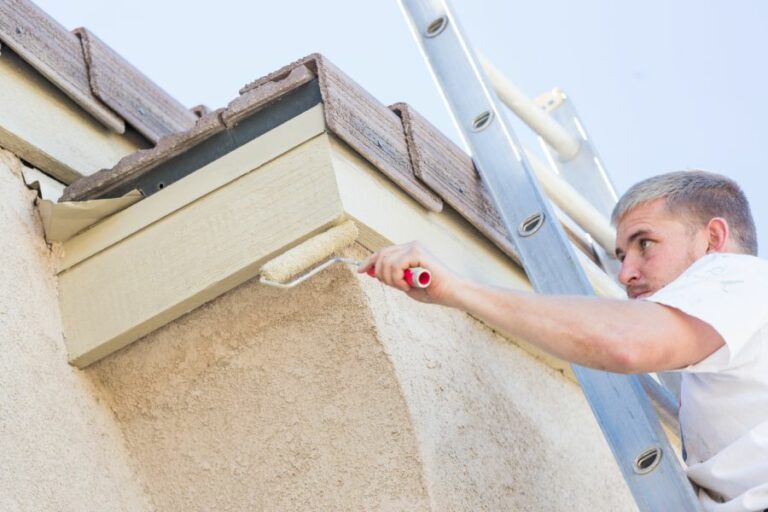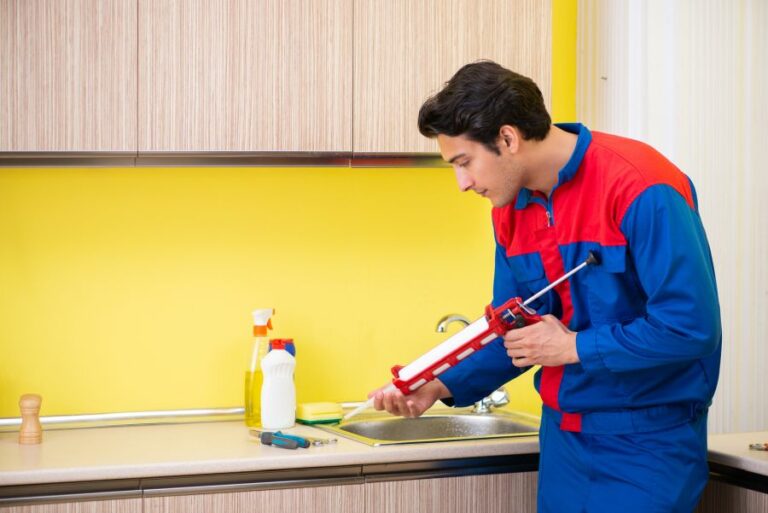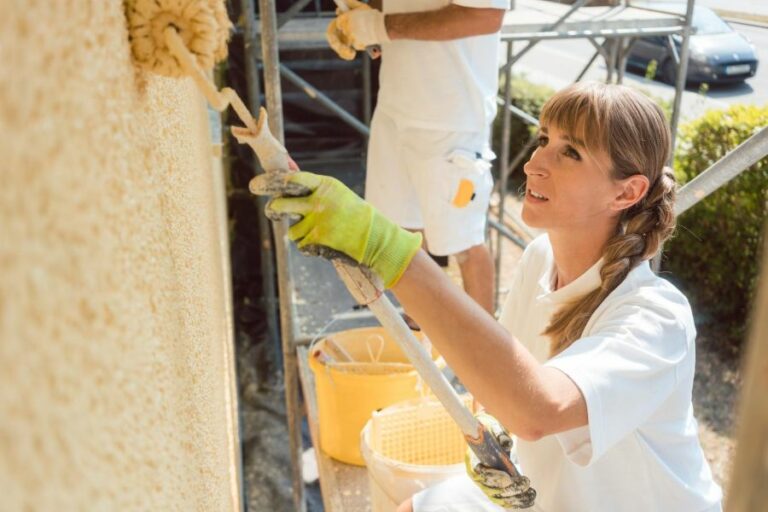Methods For Chemical Cleaning Of Surfaces, What Pros Say
Cleaning surfaces is essential to maintaining a safe and healthy environment, and sometimes, a simple wipe-down just doesn’t cut it. Chemical cleaning methods are needed to remove stubborn contaminants and properly sanitize surfaces.
Methods for chemical cleaning of surfaces:
Chemical cleaning methods for surfaces include solvent cleaning, alkaline cleaning, acid cleaning, detergent cleaning, and ultrasonic cleaning. These techniques are used in automotive, aerospace, food processing, and manufacturing to ensure cleanliness, extend material lifespan, and prevent contamination. Proper procedures and safety measures are crucial for effective cleaning.

Discover the science behind the chemical cleaning of surfaces as we dive into various methods, applications, and their effectiveness. Learn how to select the best technique for your next project as we uncover the secrets of achieving impeccably clean surfaces! Read on for more insight!
Contents
- 1 Techniques for Surface Cleaning with Chemicals
- 2 Top 4 Chemical Cleaning Approaches Explained
- 3 Understanding Chemical-Based Surface Cleaning Techniques
- 4 Exploring Surface Treatment Cleaning Methods
- 5 Discover the 9 Primary Cleaning Chemical Categories
Techniques for Surface Cleaning with Chemicals
Chemical cleaning of surfaces is essential in various industries, including automotive, aerospace, food processing, and manufacturing. These cleaning methods ensure cleanliness, extend the lifespan of materials, and prevent contamination.
• Solvent Cleaning
Solvent cleaning is a widely used method in industrial applications to remove oil, grease, and other organic contaminants. The process involves the use of organic solvents that dissolve impurities on the surface. The most common solvents used for this purpose are:
- Hydrocarbons (e.g., mineral spirits, kerosene, and naphtha)
- Halogenated hydrocarbons (e.g., perchloroethylene, trichloroethylene, and methylene chloride)
- Alcohols (e.g., methanol, isopropanol, and ethanol)
- Ketones (e.g., acetone and methyl ethyl ketone)
To ensure effective cleaning, it’s essential to choose the appropriate solvent based on the type of contaminant and the material being cleaned. Improper solvent selection may result in damage to the surface or incomplete removal of impurities.
Additionally, it’s critical to follow proper safety measures when using solvents. Always work in a well-ventilated area and wear appropriate personal protective equipment (PPE), such as gloves and goggles.
• Alkaline Cleaning
Alkaline cleaning is an effective method for removing inorganic materials, such as rust, scale, and mineral deposits. This method uses alkaline cleaning agents, which typically contain sodium hydroxide, potassium hydroxide, or ammonium hydroxide.
Alkaline cleaning is commonly used in manufacturing, heavy equipment maintenance, and food processing facilities.
To achieve optimal results, carefully adjust the cleaning agent’s concentration, temperature, and exposure time. Too high of a concentration or excessive exposure time can damage certain materials, while insufficient concentrations may not effectively remove contaminants.
Always rinse thoroughly with water after cleaning to neutralize any residual alkaline agent on the surface.
• Acid Cleaning
Acid cleaning, also known as pickling, is a method used to remove rust, scale, and mineral deposits from metal surfaces.
Common acids used for this process are hydrochloric, sulfuric, nitric, and phosphoric acid. This cleaning method is widely used in industries such as metal fabrication, oil and gas, and power generation.
When performing acid cleaning, it’s essential to use appropriate concentrations and exposure times to prevent damage to the material being cleaned. After cleaning, thoroughly rinse surfaces with water to remove any traces of acid and prevent corrosion.
• Detergent Cleaning
Detergent cleaning involves the use of water-based cleaning agents to remove contaminants from surfaces.
These cleaning agents contain surfactants, chelating agents, and pH modifiers, which help dissolve and suspend contaminants in the water solution. Detergent cleaning is suitable for various materials, including metals, plastics, glass, and ceramics.
To achieve the best results, consider factors such as detergent concentration, temperature, and cleaning time. Since different types of contaminants and materials require specific cleaning agents, proper detergent selection is crucial.
Additionally, it’s essential to rinse surfaces after cleaning to remove any residue.
• Ultrasonic Cleaning
Ultrasonic cleaning is a powerful method for removing contaminants from surfaces, particularly in hard-to-reach areas. This method uses high-frequency sound waves to create cavitation bubbles in a cleaning solution, which then implode and generate intense cleaning action.
Ultrasonic cleaning is suitable for various materials and is often used in industries such as automotive, aerospace, and medical devices.
To optimize ultrasonic cleaning performance, match the solution’s frequency, power, and exposure time to the type of material and contaminant.
Moreover, choose the appropriate cleaning solution based on the material and contamination type, such as solvents, alkaline cleaners, or detergents.
In conclusion, numerous chemical cleaning methods effectively remove contaminants from surfaces. Each method has its advantages and specific applications, so carefully consider factors such as material type, contaminant type, and cleaning agent selection when choosing the best cleaning method.
By following proper procedures and safety measures, these chemical cleaning methods can ensure the cleanliness, longevity, and performance of various surfaces in numerous industries.
Top 4 Chemical Cleaning Approaches Explained
Chemical cleaning is a crucial process in various industries, including manufacturing, pharmaceuticals, and water treatment. It effectively removes contaminants, such as scale, corrosion, and residual chemicals, from surfaces and equipment.
• Acid Cleaning
Acid cleaning, also known as descaling or pickling, involves the use of acidic solutions to remove scale, rust, and other mineral deposits from metal surfaces. Common acids used include hydrochloric, sulfuric, and nitric acids.
– Advantages of Acid Cleaning:
- Highly effective in dissolving mineral-based deposits, such as scale and rust.
- Capable of treating large, complex systems and equipment quickly.
- Time-saving compared to mechanical cleaning methods.
– Disadvantages of Acid Cleaning:
- Corrosive and can damage surfaces if improperly handled or left for too long.
- Requires careful neutralization and disposal to prevent environmental damage.
- Can release hazardous fumes, requiring adequate ventilation and safety precautions.
– Recommended Applications:
- Descaling heat exchangers, boilers, and condensers.
- Removing rust from metal surfaces.
- Cleaning process equipment in chemical and petrochemical industries.
• Alkaline Cleaning
Alkaline cleaning uses alkaline solutions, particularly sodium hydroxide or potassium hydroxide, to remove organic contaminants such as grease, oil, and dirt from surfaces. It is particularly effective in breaking down fats and proteins.
– Advantages of Alkaline Cleaning:
- Effective removal of organic-based contaminants.
- Non-toxic and biodegradable components.
- Can be combined with detergents for enhanced cleaning.
– Disadvantages of Alkaline Cleaning:
- May cause corrosion in aluminum and other soft metals.
- Requires thorough rinsing to remove alkaline residues.
- Highly alkaline solutions might cause skin or eye irritations if not handled with appropriate safety measures.
– Recommended Applications:
- Degreasing and cleaning metal surfaces before painting or plating.
- Removing fats, oils, and protein-based deposits in food processing industries.
- Cleaning equipment in pharmaceutical and cosmetic industries.
• Solvent Cleaning
Solvent cleaning utilizes organic solvents to dissolve and remove various contaminants from surfaces. The choice of solvent depends on the specific contaminants, material compatibility, and cleaning requirements. Common solvents include alcohols, ketones, and hydrocarbons.
– Advantages of Solvent Cleaning:
- Effective in dissolving a wide range of contaminants, such as oils, grease, and resins.
- Non-corrosive and gentle on sensitive materials and components.
- Allows for precision cleaning and targeted removal of contaminants.
– Disadvantages of Solvent Cleaning:
- Some solvents can be toxic, flammable, or have high vapor pressures, requiring careful handling and storage.
- Environmental concerns, as some solvents may contribute to air and water pollution.
- Potential for solvent residues if not adequately rinsed or dried.
– Recommended Applications:
- Cleaning electronic components, such as printed circuit boards and semiconductor wafers.
- Dissolving and removing adhesives, paints, or coatings.
- Precision cleaning in aerospace and automotive industries.
For a comprehensive list of various solvents and their properties, you may refer to this EPA solvent database.
• Detergent Cleaning
Detergent cleaning involves the use of aqueous-based detergents, comprising surfactants, dispersants, and other additives, to break down and remove contaminants from surfaces. This method is efficient for removing both organic and inorganic contaminants.
– Advantages of Detergent Cleaning:
- Versatile cleaning capabilities, suitable for a wide range of contaminants.
- Eco-friendly, as most detergents are biodegradable and water-soluble.
- Safe to use, posing minimal hazards to humans and equipment.
– Disadvantages of Detergent Cleaning:
- May be less effective for heavily contaminated surfaces.
- Requires thorough rinsing to remove detergent residues.
- Some detergents might cause foaming, increasing the difficulty of rinsing and disposal.
– Recommended Applications:
- General-purpose cleaning in industrial, institutional, and household settings.
- Removing contaminants from glass, plastic, and stainless steel surfaces.
- Cleansing medical devices and laboratory equipment.
In conclusion, the choice of chemical cleaning method depends on the specific contaminants, material compatibility, and cleaning requirements.
Understanding the advantages and disadvantages of each method is crucial to selecting the best solution for maintaining clean and functional equipment across different industries.
| 4 Methods of Chemical Cleaning | |
|---|---|
| 1 | Acid cleaning |
| 2 | Alkaline cleaning |
| 3 | Solvent cleaning |
| 4 | Detergent cleaning |
Understanding Chemical-Based Surface Cleaning Techniques
• Introduction
Surface cleaning is critical in maintaining the hygiene and appearance of various items and surroundings. Among the numerous approaches to surface cleaning, the chemical method is one of the most effective in removing stains, dirt, and contaminants.
• Basics of Chemical Cleaning
The chemical cleaning method works by utilizing chemical agents to dissolve, emulsify, or remove contaminants on various surfaces. The process involves applying a chemical cleaner to the surface, scrubbing or agitating the area, and then rinsing or wiping it away.
The efficiency of chemical cleaning depends on factors such as the type of surface, the nature of the contaminants, and the properties of the chemical cleaner used.
– Types of Chemical Cleaners
There are four main classes of chemical cleaners, each with unique characteristics and applications:
- Alkaline cleaners: These cleaners are effective in removing grease, oil, and protein-based contaminants. They work by neutralizing acids and breaking down complex substances into simpler, water-soluble compounds. Alkaline cleaners are commonly used in kitchen surfaces, industrial equipment, and automotive parts. Some common examples include all-purpose cleaners and degreasers.
- Acidic cleaners: These cleaners are efficient in dissolving mineral deposits, rust, and hard water stains. They work by reacting with and dissolving the contaminant in a process called acid-base reaction. Acidic cleaners are suitable for surfaces such as toilets, bathroom tiles, and glassware. Some examples include toilet bowl cleaners and descalers.
- Solvent cleaners: These cleaners use solvents to dissolve oils, fats, and grease, making them ideal for removing oil-based stains and adhesive residues. They work by weakening the bonds between the contaminant and the surface, allowing for easy removal. Solvent cleaners are often used in the automotive and electronics industries. Some examples include adhesive removers and metal degreasing agents.
- Enzymatic cleaners: These cleaners leverage enzymes to break down organic matter, such as food, blood, and bodily fluids. Enzymatic cleaners work by breaking down complex organic substances into simpler compounds that are easily washed away. This type of cleaner is commonly used in medical settings, animal care facilities, and biological laboratories. Some examples include enzyme-based laundry detergents and surface cleaning solutions.
• Choosing the Right Chemical Cleaning Product
In selecting an appropriate chemical cleaning product, it is essential to consider the following factors:
– Surface Material
Different surfaces require specific cleaning agents. It is crucial to choose a chemical cleaner that is safe for the material you are cleaning to avoid damage or discoloration.
For example, avoid using acidic cleaners on natural stones, such as marble and limestone, as they can etch and damage the surface. Alternatively, you can check the manufacturer’s recommendations for cleaning the specific material.
– Type of Contaminant
The type of contaminant plays a vital role in determining the most suitable chemical cleaner. For instance, alkaline cleaners are optimal for grease and oil-based stains, while acidic cleaners work best on mineral deposits and hard water stains.
– Safety and Environmental Considerations
Some chemical cleaners contain harsh chemicals that can pose health risks and environmental hazards.
It is essential to consider a cleaning agent’s safety and environmental impact, especially when used in environments with vulnerable populations (e.g., children, pets, and individuals with allergies or respiratory issues).
In this regard, opting for eco-friendly and non-toxic cleaning products can be beneficial.
– Dwell Time
Dwell time refers to the amount of time a chemical cleaner needs to remain in contact with the surface for optimal cleaning results. Depending on the type of surface and contaminant, dwell times can range from a few seconds to several minutes.
Be sure to follow the manufacturer’s recommendations for dwell time to avoid potential damage or ineffective results.
• Expert Recommendations
Based on my experience, I recommend always testing a chemical cleaner on a small, inconspicuous area before applying it to the entire surface. This precaution can help ensure its effectiveness and prevent damage to the material.
Additionally, always adhere to the manufacturer’s instructions for mixing, application, and dwell time, as improper use can lead to ineffective cleaning or surface damage.
Lastly, consider the potential health and environmental impacts. Opt for eco-friendly, non-toxic solutions whenever possible, and use proper protective equipment, such as gloves and masks, when handling chemicals.
For further information on different types of cleaning agents and their applications, the U.S. Environmental Protection Agency (EPA) maintains a comprehensive list, which provides safer alternatives to traditional chemical cleaners.
• Conclusion
The chemical method of surface cleaning is a highly effective approach for tackling various contaminants and maintaining cleanliness.
By understanding the different types of chemical cleaners, their applications, and key considerations in selecting the appropriate product, you can ensure optimal cleaning results while minimizing potential harm to the surface, yourself, and the environment.
Exploring Surface Treatment Cleaning Methods
Surface treatment is an essential process for various industries, including automotive, aerospace, electronics, and medical devices, among others. Proper cleaning of surfaces is crucial to ensure the quality and durability of products.
• Mechanical Cleaning
Mechanical cleaning is a widely adopted method for surface treatment. It is an efficient method of removing contaminants, rust, and paint from metal surfaces. Mechanical cleaning includes a variety of techniques, such as:
– Abrasive Blasting
Abrasive blasting, also known as sandblasting, is a popular method of cleaning surfaces by propelling abrasive particles onto the surface at high velocity.
This process helps in removing rust, scale, and dirt from metal surfaces, making it suitable for further treatment or coating. Common abrasive materials include silica sand, steel grit, and glass beads.
– Wire Brushing
Wire brushing is a simple and effective method for cleaning metal surfaces. It involves using a wire brush to scrub the surface, removing contaminants, rust, and loose paint. Wire brushing can be performed manually or by using power tools.
– Grinding
Grinding is another mechanical method for cleaning surfaces. It is particularly efficient for removing paint and thick layers of contamination from metal surfaces. Grinding wheels made of abrasive material are used to remove material from the surface, resulting in a clean and smooth surface.
• Chemical Cleaning
Chemical cleaning methods involve using chemicals to remove contaminants from surface treatment. These chemicals are specifically designed to dissolve or loosen contaminants while not affecting the base material. Chemical cleaning includes:
– Solvent Cleaning
Solvent cleaning is a widely used method for cleaning metal surfaces. It involves the use of organic solvents such as acetone, isopropyl alcohol, or mineral spirits to dissolve and remove contaminants, grease, and oil from the surface.
Solvents can be applied using a brush, spray, or immersion. It is crucial to dispose of used solvents properly, as they can be harmful to the environment.
– Acid Cleaning
Acid cleaning, also known as pickling, is an effective method for removing rust, scale, and mineral deposits from metal surfaces.
Acids such as hydrochloric, sulfuric, or phosphoric acid are used to dissolve contaminants, leaving a clean surface. After the cleaning process, the surface must be thoroughly rinsed with water to remove residual acid.
– Alkaline Cleaning
Alkaline cleaning is another chemical method that involves using alkaline compounds to break down contaminants on the surface.
These compounds can include sodium hydroxide, potassium hydroxide, or alkaline detergents. Alkaline cleaning is effective in removing grease, oil, and organic contaminants from metal surfaces.
• Ultrasonic Cleaning
Ultrasonic cleaning is a non-destructive cleaning method for surface treatment that uses high-frequency sound waves to create cavitation bubbles in a cleaning solution.
These bubbles implode upon contact with the surface, creating a scrubbing action that removes contaminants from the surface. Ultrasonic cleaning is particularly suitable for intricate and delicate components where manual cleaning might be challenging.
• Electrolytic Cleaning
Electrolytic cleaning, also known as electro-cleaning, is a process that uses an electric current to clean metal surfaces. The metal part is submerged in an electrolyte solution and connected to the cathode of a direct current power source.
The process creates hydrogen gas at the surface, helping to lift contaminants from the surface. Electrolytic cleaning is beneficial for cleaning surfaces with complex geometries, as the electric current can reach areas inaccessible by other methods.
• Plasma Cleaning
Plasma cleaning is an advanced cleaning method for surface treatment that utilizes plasma, a highly-ionized gas, to clean surfaces. The plasma reacts with contaminants on the surface, breaking them down into volatile compounds or gas, which can be easily removed.
Plasma cleaning is a gentle process and is suitable for cleaning sensitive surfaces, such as semiconductor materials or optical lenses.
• Choosing the Right Cleaning Method
Selecting the appropriate cleaning method depends on the type of surface material, the nature of the contaminants, and the requirements of the subsequent surface treatment process.
It is essential to consider the environmental impact, safety, and efficiency of the cleaning method. In some cases, a combination of cleaning methods may be necessary to achieve the desired results.
In conclusion, proper cleaning of surface treatment is vital to ensure the quality and longevity of products. Understanding the different cleaning methods, their advantages, and their suitable applications is crucial for achieving efficient and effective surface treatment results.
Method | Description |
|---|---|
Brush Cleaning | Using a brush or broom to remove loose dirt, dust, and debris from the surface. |
Vacuum Cleaning | Using a vacuum cleaner to remove dirt, dust, and debris from the surface. |
Water Washing | Using water and a suitable detergent to clean the surface. |
Chemical Cleaning | Applying chemical agents to the surface to break down and remove contaminants. |
Abrasive Blasting | Using an abrasive material to clean the surface by forcibly propelling a stream of abrasive material against it. |
Ultrasonic Cleaning | Utilizing ultrasonic waves and a cleaning solution to clean the surface through cavitation bubbles. |
High-Pressure Water Jetting | Using high-pressure water to blast away dirt, debris, and contaminants from the surface. |
Steam Cleaning | Applying steam to the surface to loosen and remove dirt, grease, and other contaminants. |
Discover the 9 Primary Cleaning Chemical Categories
The right kind of cleaning chemicals can make all the difference in maintaining a clean and healthy environment. There are several types of cleaning chemicals available, each designed to address specific cleaning needs.
• 1. Alkaline Cleaners
Alkaline cleaners effectively remove dirt, stains, and grease from a variety of surfaces by neutralizing the acidity present in the stains. Commonly used alkaline cleaners include ammonia, sodium hydroxide, and potassium hydroxide solutions.
Recommendation: Alkaline cleaners are perfect for cleaning ovens, griddles, and floors. However, due to their corrosive nature, always wear gloves and avoid using them on sensitive surfaces like glass and aluminum.
• 2. Acidic Cleaners
Acidic cleaners contain acids (e.g., hydrochloric, phosphoric) that remove mineral deposits, rust stains, and other stubborn residues on hard surfaces. They are most effective when used on inorganic stains like calcium and lime buildup.
Recommendation: Acidic cleaners work well on bathroom tiles, sinks, and toilets. However, they should not be used on marble or other sensitive stone surfaces, as they may cause etching or discoloration.
• 3. Disinfectants
Disinfectants contain antimicrobial agents that destroy or inactivate harmful microorganisms on surfaces. They are commonly used to decontaminate medical facilities, educational institutions, and other public spaces.
Recommendation: Disinfectants should be used on high-touch surfaces like doorknobs, light switches, and countertops. Always follow the product’s recommended contact time to ensure the effective elimination of germs.
• 4. Sanitizers
Sanitizers reduce the number of bacteria on surfaces to a safe level. They are not as potent as disinfectants, but they are gentler on surfaces, making them ideal for cleaning kitchen utensils and food preparation areas.
Recommendation: Always follow the sanitizer’s instructions for dilution and application. In commercial settings, adhering to local health department regulations regarding sanitizer use is crucial.
• 5. Degreasers
Degreasers are powerful cleaning agents specifically designed to remove grease and oil from surfaces. They typically contain alkaline chemicals or solvents (e.g., citrus-based cleaners) to dissolve grease effectively.
Recommendation: These cleaners are ideal for cleaning grills and garage floors. However, use only the recommended amount, as excessive use can strip paint and other protective coatings from surfaces.
• 6. Abrasive Cleaners
Abrasive cleaners contain particles (e.g., silica, pumice) that help to scrub and remove dirt and stains by physically abrading the surface. They are available in both liquid and powder forms.
Recommendation: Use abrasive cleaners to remove stubborn stains in sinks, ovens, and bathtubs. However, avoid using them on delicate surfaces like glass or fiberglass, as they may cause scratching.
• 7. Neutral Cleaners
Neutral cleaners have a pH close to 7, which means they are neither acidic nor alkaline. These gentle cleaners are ideal for daily cleaning of most surfaces like floors, carpets, and countertops.
Recommendation: Neutral cleaners are suitable for regular maintenance of hard surfaces, especially flooring like hardwood, laminate, and stone. Make sure to dilute the cleaner according to the product’s instructions.
• 8. Enzymatic Cleaners
Enzymatic cleaners contain enzymes and bacteria that break down organic materials like food, grease, and bodily fluids. They are eco-friendly and excellent for removing stains and odors in fabrics and carpets.
Recommendation: Use enzymatic cleaners on surfaces like carpets, upholstery, and bedding to remove stains and odors. However, be patient and allow the enzymes to work for several hours or even overnight.
• 9. Specialty Cleaners
Specialty cleaners are designed to address specific cleaning tasks like removing mold, mildew, or hard water stains. They may have unique formulations to provide effective cleaning for targeted applications.
Recommendation: Always follow the label directions on specialty cleaners, as they may require specific application methods or the use of protective gear.
In conclusion, understanding the nine main types of cleaning chemicals and their intended uses can help you make informed decisions about which cleaning products to use for specific situations.
By following the guidelines and recommendations provided above, you can effectively maintain a clean and healthy environment.







